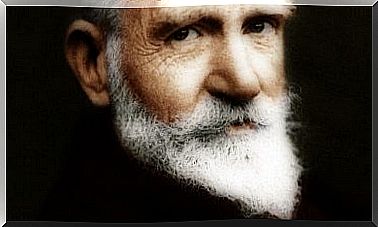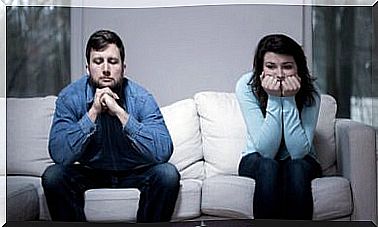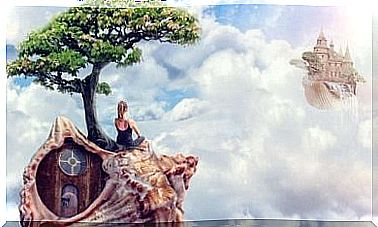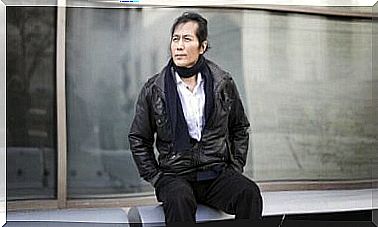Let Me In: From Fantastic To Real Violence
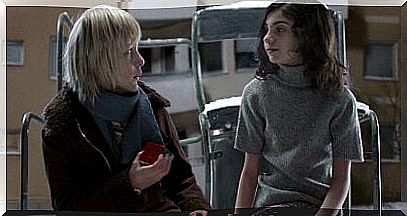
Surely, when thinking about vampire movies, images of actors like Béla Lugosi or Christopher Lee playing Dracula come to mind. And it is that the image of the bloody count has been exploited ad nauseam, but it is not the only example of a vampire that we find. Cinema, literature and the arts in general have contributed to drawing a rather archetypal image of the vampire. Let me in , the film that Thomas Alfredson released in 2008, blurs, in a way, this archetype.
We could make a long list of films that talk about vampires, from different points of view and we could even take a journey through the passage of time to define the way in which their profile has changed. From the classic count with a black cape and sharp fangs to the eternal sinister and charming adolescent of sagas, such as Twilight ; vampires seem to have dressed in many costumes.
However, if we think coldly what a vampire would be like in reality, surely, his image, more than elegant, is unpleasant. And we are not going to deny that a person who feeds on blood and does not tolerate sunlight can be anything but beautiful.
Thus, Let me in introduces us to a credible vampire, a vampire whose blood dries around his lips and who survives his instincts as best he can.
But beyond the incredible fantastic proposal, Alfredson tried to talk about quite everyday issues, to portray the Swedish society of the moment and its conflicts.
Let me in is a film that is halfway between the fantastic and the real, capable of talking about vampires, but also about bullying , violence and pedophilia. Inspired by an even darker literary work, the film surprises by embracing the tradition of vampire cinema and finally reinventing it, reinterpreting it and taking it to an updated setting.
Between tradition and today
We open this point by asking ourselves what we mentioned at the beginning: what exactly is a vampire? In the collective imagination, deeply nourished by cinema and literature, the idea of beings that never grow old, terrifying, but endowed with a certain elegance remains rooted; beings that cannot bear light, who sleep in coffins and whose nature leads them to feed on blood.
In the first decade of the last century, titles such as Nosferatu (Murnau, 1922) or Dracula (Browning, 1931) contributed to consolidating the image of the vampire. However, both the public and society are evolving and it is no longer so easily scared.
With the advent of television, these monsters stopped terrifying and became an object of ridicule ; thus, filmmakers such as Polanski dared to ridicule his image with films such as The Dance of the Vampires (Polanski, 1967).
The 90s were the rescue of classicism, of that classic vampirism that goes from the gothic to the beautiful, from the terrifying to the romantic in a matter of seconds. From this decade we have titles such as Interview with the Vampire (Jordan, 1994) and Bram Stoker’s Dracula (Coppola, 1992).
The genre has been exploited to unsuspected levels, giving us jewels, but also embracing pathos in its most commercial aspect with sagas like Twilight , which move away from the terrifying figure of the vampire, and even from the comic, to show us an adolescent vision.
This abuse of the genre seemed to have exhausted ideas, not to present anything new, until films like Only Lovers Survive (Jasmusch, 2013) or Let me in show that a reinvention is possible; in addition to opening the door to explore other paths, much deeper and much more interesting.
Focusing on the film that concerns us today, we see that the image of the vampire is no longer linked to elegance, but to a careless-looking girl. Blood no longer poetically drips from her lips, but instead soaks up her face and dries up, making her look rather more unsightly and realistic.
We should not see this update as a drastic break with the genre, but as a reinterpretation. The vampire protagonist of Let me enter drinks from tradition and presents a large number of traits that connect with that image that we all have of the vampire : she does not sleep in a coffin, but she does so in a bathtub, the everyday object most similar to the coffin; cannot be exposed to light and walks vertically; ask permission to enter, etc. In short, the most purely traditional elements merge with the latent realism of the film’s setting.
Let me in: the depth of realism
To understand fantasy cinema as pure implausibility would be a mistake; the fantastic, like any genre, is capable of using metaphor to express a harsh criticism.
Thus, films like The Shape of Water (Del Toro, 2017) try to justify their monsters, to show that appearances are deceiving and that the monsters, most of the time, are humans themselves. Let me in, he does the same, taking advantage of the resources of the fantastic to tell us a tragic, cruel story and, unfortunately, more common than we would like.
The bullying is presented as evil and the same time, the evil exerted on Oskar, the protagonist, seems to take possession of it. Eli, the vampire girl, despite appearing as a monster or as a threat, shows a certain humanity that, at times, surpasses that of humans themselves. He has no choice, he must kill to survive, he responds to an uncontrollable instinct that justifies his violence.
However, there is no such justification for some of the human characters in the film. Oskar is the victim of harassment from his peers and indifference from adults, but anger and violence end up also being born in him.
The children who torment Oskar act without apparent motivation, but Eli does so out of necessity. In this way, the justification of the monster contrasts with the non-justification of the more everyday violence that we can perceive in the rest of the characters and that appeals to our societies.
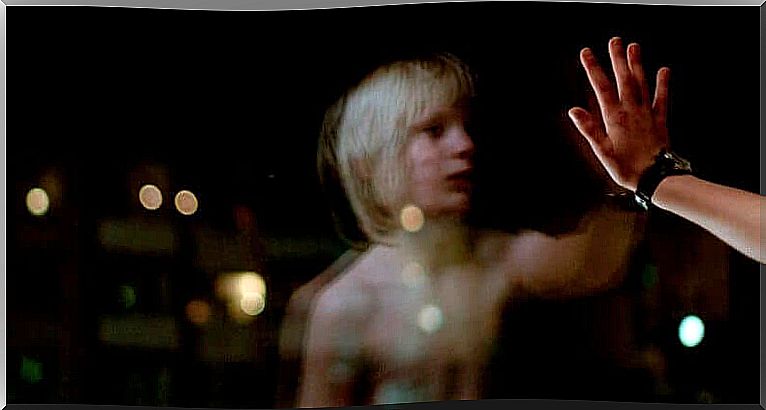
The portrait that is made of this daily violence stands out for its harshness, for the pain of its images. In a subtle but poignant way, the filmmaker tells us about other evils that coexist with us, such as selfishness, broken families, the heavy burden of appearances …
Violence permeates the icy Swedish landscape through which the characters move, taking over childhood innocence. We all carry a load, we all cry in silence and we all look for a way to escape.
Let me enter addresses other equally alarming, but silenced issues, such as suicide or pedophilia. Not without first showing us that love is above everything, even gender.
Eli’s past is delicately addressed through a brief image in which the viewer understands that, as she herself points out, she was not always a girl.
The naturalness and complexity of the film rest on indelible traces of the tradition of terror that blend in with the horror of reality itself. In a calm way, with images of powerful beauty, the film ends up showing that, perhaps, the one we call a monster is not as monstrous as society itself.

